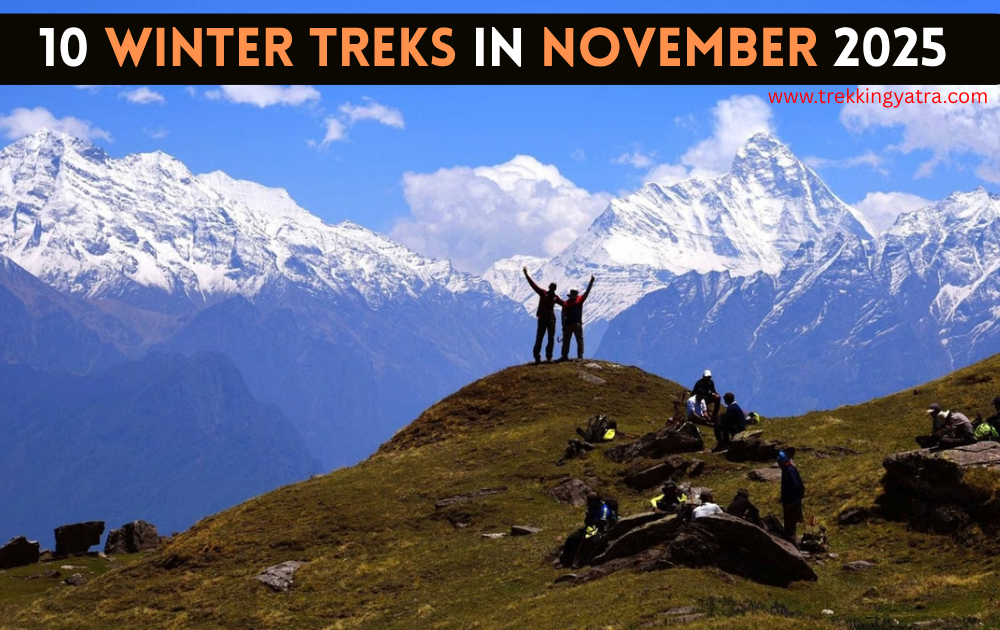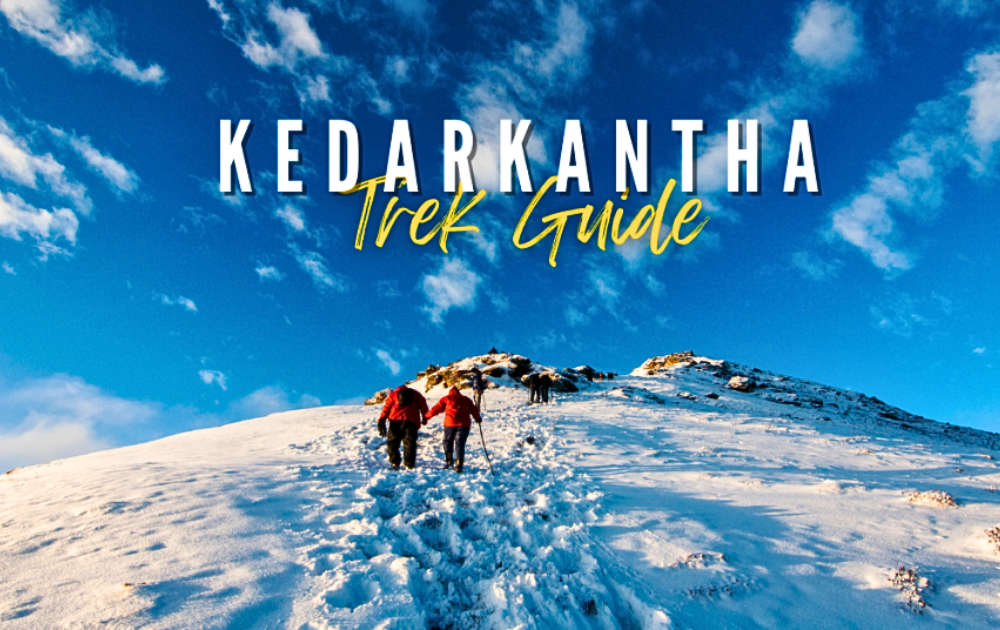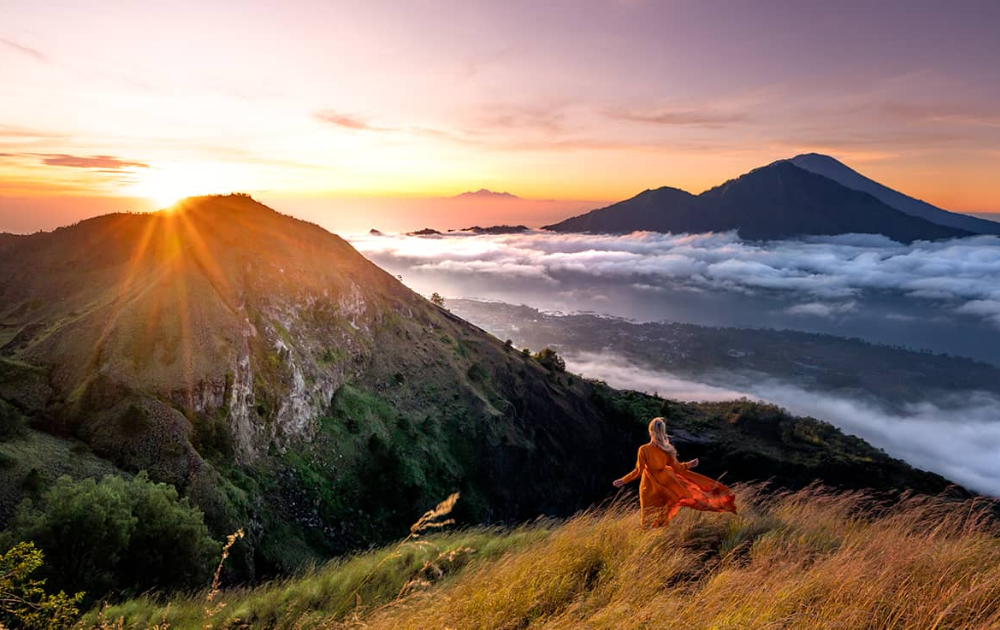The Kedarkantha trek is one of Uttarakhand’s most popular winter treks — beginner-friendly, snow-scenic, and achievable in a short 4–6 day itinerary. This guide covers route, day-wise plan, costs, how to reach Sankri, gear, safety tips, and FAQs so you can plan your November 2025 trek confidently.
Why Kedarkantha is perfect for November treks
Kedarkantha is famous for its classic winter landscape: dense pine and oak forests that open into snow-covered meadows and a summit that offers 360° views of the Garhwal Himalaya. November is a great time to attempt the trail because you often get clear post-monsoon skies and the first dustings of snow on upper sections — giving you great visibility and the “start of winter” atmosphere without the deepest cold of mid-December.
Quick facts at a glance
-
Region: Uttarkashi district, Uttarakhand (starts from Sankri village).
-
Highest point / Summit altitude: ~12,500 ft (3,810 m).
-
Typical duration: 4–6 days (Sankri → Kedarkantha → Sankri), depending on pace and itinerary.
-
Trail distance (approx): ~20–25 km round trip, depending on exact route and campsites.
-
Difficulty: Easy–Moderate — suitable for beginners with basic fitness and a guided crew.
Best time to do the Kedarkantha trek
-
Winter (Snow experience): November through March — peak snow months are December to February. November gives early snowfall in higher camps and clearer skies.
-
Other windows: Spring (March–April) and summer (May–June) are pleasant if you prefer green meadows over snow.
How to reach Sankri (base village)
-
By Air: Nearest airport is Dehradun (Jolly Grant). From Dehradun, you can hire a taxi or take a bus to Uttarkashi/Sankri.
-
By Train: Nearest major railhead is Dehradun. From there, road travel to Sankri is required.
-
By Road: Sankri is roughly 200–220 km from Dehradun and typically takes 8–10 hours by road, depending on road conditions and stops. Most trek operators do a pickup from Dehradun or Haridwar and drive to Sankri on the first day.
Pro tip: Night/early-morning drives are common; carry warm clothes and water for the road. Road times vary by season — in early winter, expect slower travel if there’s snow.

Typical 5-day Kedarkantha itinerary (most popular)
This is the commonly-run schedule used by many operators — it balances acclimatization, scenery, and comfortable camping.
Day 0 — Travel to Sankri
Drive from Dehradun → Sankri (overnight in guesthouse). Short village walk and gear check.
Day 1 — Sankri to Juda Ka Talab (camp)
Trek through forests and small clearings to the first campsite at Juda Ka Talab (or similar), 4–6 hours depending on pace. Camp, hot meal, early night.
Day 2 — Juda Ka Talab to Kedarkantha Base / Base Camp
Trek day with moderate ascent; set up camp near the base for summit push next morning.
Day 3 — Summit Day (Kedarkantha Summit) and descend to Sankri or base
Pre-dawn ascent to catch sunrise from the summit (unforgettable panoramic views), then descend back down to Sankri or intermediate campsite. Summit & descent make for a long but rewarding day.
Day 4 — Buffer day / Return to Sankri
Buffer for bad weather or leisurely descent, then drive out toward Dehradun/Haridwar.
Variations: Some operators do a 4-day schedule by compressing stages; others add an extra acclimatization day if running small groups or for slower trekkers.
Cost estimate (typical range)
Costs vary by operator, group size, and inclusions (meals, tents, sleeping bags, transfers). As a general guideline for the 2025 season:
-
Budget group/operator: ₹6,000–₹9,000 per person (basic meals, shared tents, pickup from Dehradun).
-
Standard operator (better food, smaller groups): ₹9,000–₹14,000 per person.
-
Private/custom packages: ₹15,000+ depending on private transfers, premium meals, and a private guide.
What’s usually included: Guide/porters, campsite meals, tents, sleeping mats (check sleeping bag policy). Not included: travel to Dehradun, personal gear, tips, emergency evacuation insurance (if applicable). Always confirm inclusions before booking.
Necessary permits & rules
-
There are no complicated permit systems like national parks in other areas, but local forest/ village regulations and fee contributions may apply for some operations during certain months. Trek operators will handle any required local permissions. Check with your operator for any updates before traveling.
Detailed packing & gear checklist (winter-focused)
Clothing & layers
-
Thermal base layer (top & bottom)
-
Fleece mid-layer + insulated down jacket (warmth for summit & nights)
-
Waterproof & windproof outer shell (jacket + pants)
-
Warm hat, neck gaiter/buff, gloves (inner + insulated outer gloves)
-
Quick-dry trekking pants & shirts
Footwear & accessories
-
Sturdy waterproof trekking boots (broken-in)
-
Thick wool socks + spare socks
-
Gaiters (useful in fresh snow)
-
Microspikes or crampons if heavy snow is expected (operator may supply)
Camping & personal
-
Good sleeping bag (rated to at least -10°C for winter) — confirm if operator supplies.
-
Trekking pole(s) — helpful on snowy slopes.
-
Sunglasses (UV protection, snow glare) + sunscreen + lip balm.
-
Headlamp, basic first-aid & blister kit.
-
Water bottle + thermos for hot drinks.
Electronics & documents
-
Power bank, camera, spare batteries (cold reduces battery life).
-
ID proof, printouts of booking, and medical insurance details.
Pro tip: In cold weather, battery life drops fast — keep phones close to your body to preserve power.
Fitness & training suggestions
Kedarkantha is beginner-friendly, but the summit push is steep. Recommended pre-trek training (3–6 weeks prior):
-
Regular brisk walking/hiking (45–90 min sessions)
-
Stair climbing and weighted walks with a loaded daypack (6–8 kg)
-
Leg strengthening (squats, lunges), core work, and cardiovascular training (jogging/cycling)
Also, practice hiking with the boots you’ll use on the trek to avoid blisters.
Safety & acclimatization
-
Kedarkantha’s altitude is moderate, and serious AMS is rare, but stay hydrated, ascend slowly, and be aware of symptoms (headache, nausea, dizziness). If symptoms appear, decline further ascent and descend.
-
Always trek with a certified guide, especially in winter/ snow conditions. Guides monitor weather, route conditions, and keep emergency plans ready.
-
Carry basic emergency medication and a small first-aid kit; consider trek-specific insurance that covers high-altitude evacuation.
Photography & summit tips
-
Sunrise from the summit is spectacular — start summit push pre-dawn to reach the top for golden light. Bring sunglasses and a face cover for the wind.
-
Battery care: Keep spare batteries warm in an inner pocket.
-
Golden-hour composition: Use foreground elements (stone cairns, pine branches) to frame broad Himalayan ridgelines.
Responsible trekking & local community
-
Follow Leave No Trace principles: carry back all non-biodegradable waste, avoid single-use plastics.
-
Support local economy: hire registered local guides, buy village-made snacks, and respect cultural spaces. Sankri and the surrounding villages welcome tourism that supports local livelihoods.
FAQs
Q: Is Kedarkantha suitable for first-time trekkers?
A: Yes — Kedarkantha is one of the best beginner-friendly winter treks with manageable altitude and clear trails when guided.
Q: How cold does it get on Kedarkantha summit in November–January?
A: Temperatures at the summit can drop well below freezing in peak winter (Dec–Feb). November will usually be colder at night, but daytime summit conditions can be manageable with proper gear.
Q: Do I need crampons or microspikes?
A: For deep snow or hard, icy patches, microspikes or light crampons are recommended. Many operators provide these, but confirm before your trek.
Q: Can I do Kedarkantha independently (without an operator)?
A: Experienced mountaineers sometimes go independently in summer, but in winter it’s safer to join an organized trek because of snow, route-finding, and emergency support.
Final words — Is Kedarkantha right for you?
If you want a short, high-reward Himalayan trek with excellent winter scenery, accessible logistics, and a summit sunrise that sticks with you, Kedarkantha is a top pick. November marks the start of snowy conditions, accompanied by clearer skies and fewer crowds than those found at deep-winter peaks. Book with a trusted operator, pack warm, and enjoy one of India’s friendliest snow treks.



